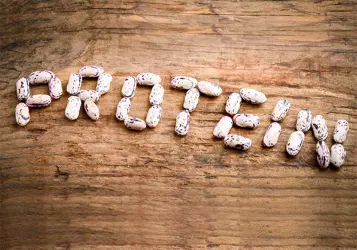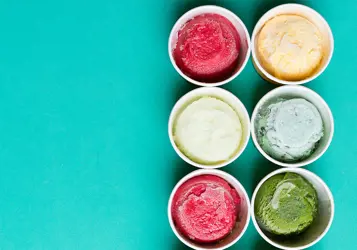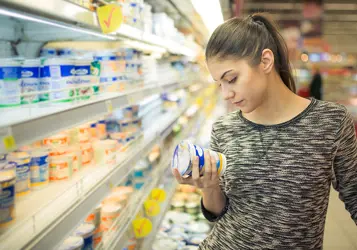Veganism, along with other, less categorical moves toward plant-based nutrition sources, is a hot trend. But is it really a good thing? Can a world that overwhelmingly chooses plant-based products as its protein sources truly sustain humanity in the foreseeable future?
A growing body of research has led to new manufacturer health claims around plant proteins in food products as a replacement for meat and dairy proteins, for example. And that’s something that is rapidly catching the attention of consumers around the world. At the same time, many vegans call for a complete halt to livestock farming.
Here, however, is the unavoidable reality: Without sustainable intensification of livestock production, particularly in the face of explosive population growth, I believe it’s unlikely - or, in fact, impossible - to source enough protein to feed the vast majority of this planet’s citizens.
Let me explain this point of view.
Exploding population
The first man landed on the moon around the time of my birth. Back then, in 1969, some 3 billion people populated the planet. Today, nearly 50 years later, the world’s population is 7.6 billion and by 2050, the United Nations projects that it will have exploded to 9.8 billion - in other words: throughout my lifetime, human population on this earth will have more than tripled.
This presents what we like to call the 2050 challenge: How can we successfully feed three times more humans in our lifetime without depleting natural resources?
Today, an increasing number of people want to know how food is produced - eager to address their concerns around environmental quality as well as animal welfare and the perceived health profile of animal-based products. This is where I believe the livestock agriculture has done itself a significant disservice. Because people don’t see how most of modern agriculture actually takes place. Instead, milk cartons and cheese packaging present consumers with a romanticised view of agriculture from decades past, a happy world of pastured cows and red barns.
By continuing this practice, producers seem to be advocating old-fashioned, small-scale production with, for example, 50 cows, 100 pigs, and 200 chickens. And that’s simply not a sustainable model.
No comment.
Faced with an ever-widening gap between this idealistic image and reality, producers asked "How is the milk produced at your dairy farm?" often respond with “No comment.” And consumers feel that something is hidden from them. When the industry does speak, it sounds like PR, rather than a truthful story of how and why food is produced.
So, it's an unfortunate situation: A public that wants to know where their food comes from combined with producers not able or willing to talk. Yet, it is critical that they do. Because today, many detractors who support plant- or lab-based protein are motivated by profit or beliefs to disrupt the food system - and the animal agriculture we need to be intensifying in a sustainable fashion is in the firing line.
Finite resources
To satisfy demand, doing things the old way - without modern livestock production - would necessarily use more land. And that would require eating into precious rain forests and wildlife reserves.
To illustrate the point, take a sheet of paper, and imagine it is the surface of the earth. Then, fold it twice to a quarter of its original size. This is the equivalent of all the land on earth (the rest is water or ice). Now, consider a business card as being the size of all of the world’s agricultural land. If you take the business card and fold it so that one piece is two thirds the size and the other is one third, then the two-thirds is the equivalent of all “marginal land” (i.e. not usable for crops, just ruminant animals to graze upon). The other one third of that business card is the total amount of “arable land” that is available to grow crops.
All land is finite. That’s a fact. So, we must use this small, one-third piece of the card as intensively as possible to avoid using land that is set aside for other ecosystem services. Given this reality, organizations such as the World Wildlife Fund (WWF), for example, says that the only way forward is to sustainably intensify agricultural land currently in use.
Fertilizer facts
Those urging the end of livestock production have yet another reality to face. There is no sustainable agriculture without livestock because livestock is the source of necessary nutrients to grow the crops we want to eat.
You see, a critical factor for growing crops is fertiliser. And there are only two types: chemical/synthetic, which are energy-intensive to produce, and organic, which is largely manure from livestock.
Clearly, if you are a hard-core vegan who eats only organic products, chemical fertiliser is unsuitable as a nutrient source for growing your fruit and vegetables; instead, animal manure is required.
Progress is good, just not in food production
It’s time we accepted the way our food is produced instead of resisting blindly when the curtain is drawn back on the romanticised farming image.
Here’s another illustration I use to emphasise this point. For cars, consumers accept that progress is good. However, they are less accepting of advances in food production.
At the beginning of my classes, I often show students an image of a 1960 Chevy and one of the 2016 model. The 1960 car looks fantastic, the latest, though, just like any other on the market. I then ask, “If you could choose one, and I would pay for it, which would you choose?” Perhaps surprisingly, 95% of my class choose the 1960 model because it looks so good.
But, when I explain that the 1960 Chevy isn't as safe or fuel efficient and has more emissions compared with the 2016 model, 95% of those who originally chose the 1960 Chevy will change their mind. Why? Because their first response is emotionally driven. Their second response is more rational.
An efficient, sustainable future
Cars today are much cleaner - Even I have an electric car that I can plug into my solar-powered house. So, in many ways, transportation is far more efficient today than 10 years ago. And that goes for livestock and animal product production, too, at least in developed parts of the world such as the USA or the EU.
It’s high time consumers were introduced to this perspective, so we can remove some of the barriers and get on with the job of ensuring sufficient, sustainable sources of protein and other important nutrients for the future.
This blog contains material and information intended for B2B customers, suppliers and distributors, and is not intended as information to the final consumers.






















